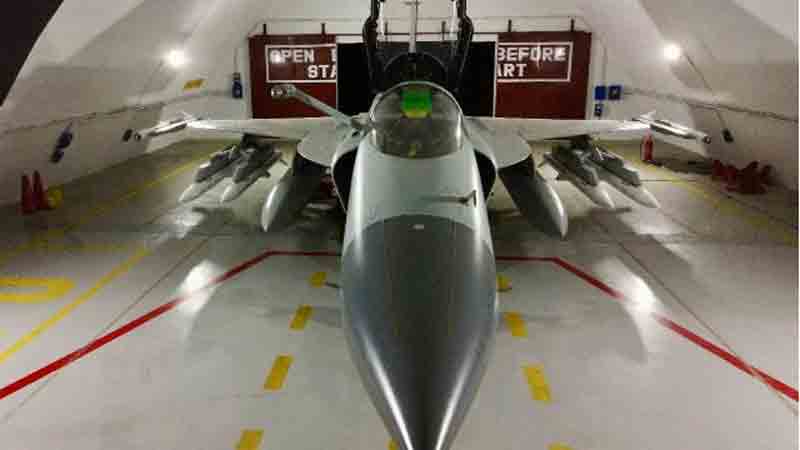The recent aerial engagement involving Chinese-manufactured Pakistani jets and French-made Indian Rafale fighters is expected to attract significant attention from military analysts seeking valuable insights that could provide advantages in future confrontations. According to two U.S. officials who spoke to Reuters, a Chinese-made Pakistani fighter jet successfully downed at least two Indian military aircraft on Wednesday, representing a potential significant achievement for Beijing’s advanced fighter technology.
This incident presents a unique opportunity for military experts to evaluate the effectiveness of pilots, aircraft, and air-to-air missiles in real combat scenarios, allowing them to enhance their own air force strategies. Analysts noted that the real-time deployment of sophisticated weaponry will be scrutinized globally, particularly by China and the United States, both of which are bracing for possible conflicts over Taiwan or in the broader Indo-Pacific area.
A U.S. official, who requested anonymity, indicated a strong belief that Pakistan employed the Chinese-made J-10 aircraft to engage Indian fighter jets with air-to-air missiles. Discussions on social media have highlighted the performance of China’s PL-15 air-to-air missile in comparison to the Meteor missile, developed by the European consortium MBDA. However, there has been no official verification of the use of these weapons.
Douglas Barrie, a senior fellow for military aerospace at the International Institute for Strategic Studies, remarked that air warfare communities in China, the U.S., and several European nations will be keenly interested in gathering accurate information regarding tactics, techniques, procedures, and the effectiveness of the equipment used. Barrie emphasized the significance of this encounter, stating, ‘You have arguably China’s most capable weapon against the West’s most capable weapon, if indeed it was being carried; we don’t know that.’ He also noted that the French and Americans would likely be looking for similar intelligence from India.
The PL-15 poses a significant challenge, drawing considerable attention from the U.S. military, according to a defense industry executive.
information remains ambiguous
Analysts and industry insiders noted that key information remains ambiguous, particularly regarding the Meteor’s deployment and the extent of pilot training. Analysts emphasized the importance of distinguishing technical performance from operational realities.
Byron Callan, a defense expert and managing partner at Capital Alpha Partners, stated, ‘There will be evaluations of what is effective and what is not, but we must also consider the complexities of warfare.’ He added that U.S. arms manufacturers are receiving ongoing insights into the performance of their products in the Ukraine conflict, and similarly, India‘s European suppliers are likely experiencing the same.
He suggested that Pakistan and China are probably exchanging similar intelligence. If the PL-15 performs as claimed or exceeds expectations, it would be of great interest to the Chinese.
A defense industry insider from a Western nation utilizing the Meteor noted that an online image of a seeker seemed to show a missile component that had failed to hit its target. There are mixed reports regarding whether Pakistan possesses the domestic variant of the PL-15 from the Chinese air force or the lower-range export model introduced in 2021.
Barrie, an expert on the missile, expressed his belief that Pakistan most likely has the export version. A Western industry source refuted assertions that the rocket-powered PL-15 has a longer range than the air-breathing Meteor but conceded that its capabilities ‘might be more impressive than previously assumed.’ The Meteor’s range has not been officially disclosed. ‘Currently, it’s impossible to make any assessments. Our knowledge is quite limited,’ the industry source remarked.
The PL-15 has garnered significant attention from the West due to its impressive range and performance over the years. Its introduction is viewed as a clear indication that China has advanced beyond its previous dependence on Soviet-era technology. In response to the PL-15’s capabilities, particularly its beyond-visual-range performance, the United States is developing the AIM-260 Joint Advanced Tactical Missile through Lockheed Martin, reflecting a shift in Western strategies towards China.
Meanwhile, European countries are considering a mid-life upgrade for the Meteor missile, which, according to the specialist publication Janes, may include enhancements in propulsion and guidance, although analysts note that progress has been sluggish.
In March, U.S. President Donald Trump awarded Boeing a contract to produce the most advanced fighter jet for the U.S. Air Force, expected to feature stealth technology, sophisticated sensors, and state-of-the-art engines.
Discover more from Defence Talks | Defense News Hub, Military Updates, Security Insights
Subscribe to get the latest posts sent to your email.




